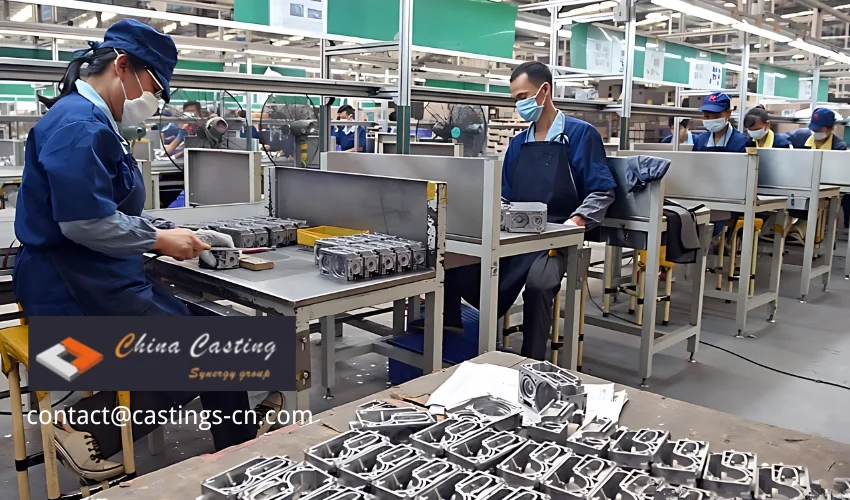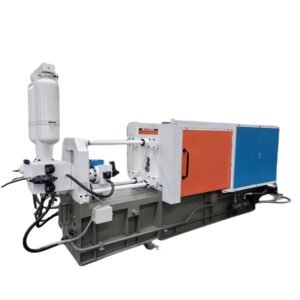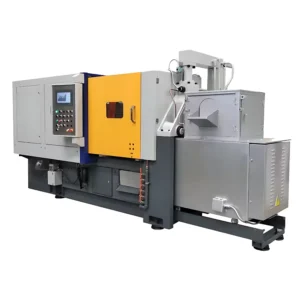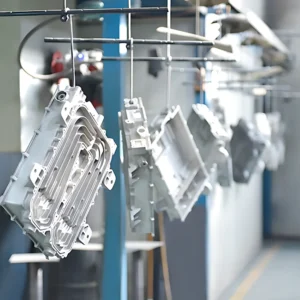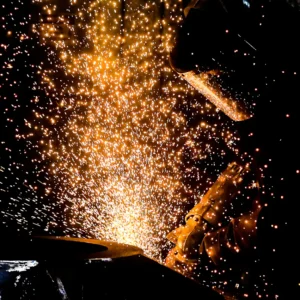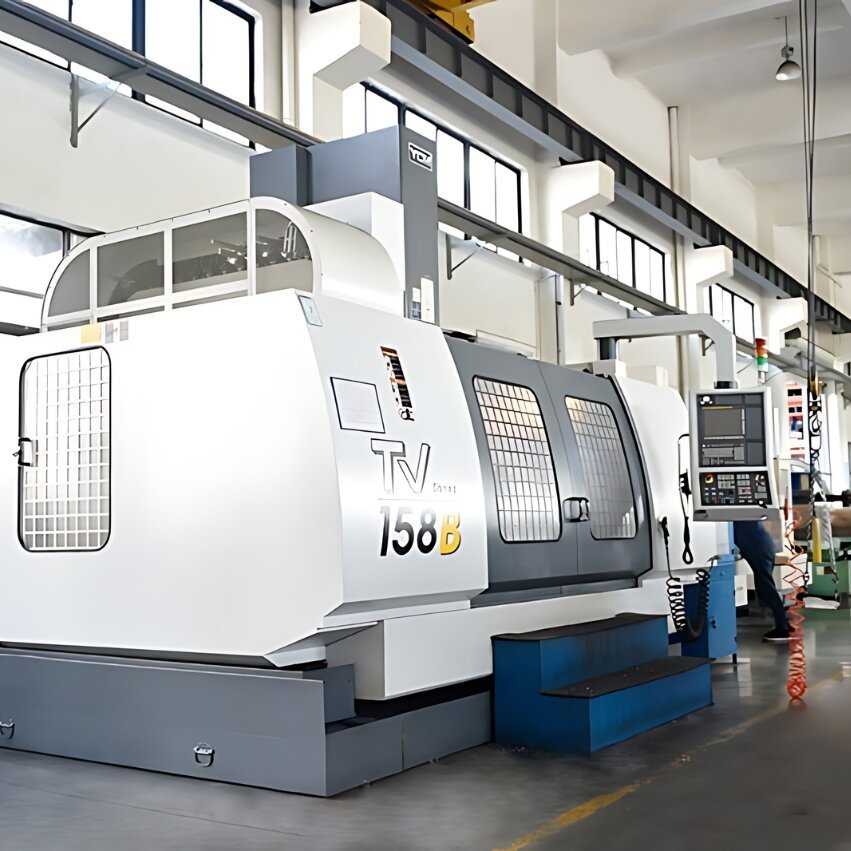Computer Numerical Control (CNC) is one of the best technological ideas of the last few decades. It has changed everything about the way production is done. The level of automation it has brought about has allowed people to focus on technical work rather than manual labor.
If you want to know “What is Computer Numerical Control” and how it works, this guide will be right up your alley. All aspects of CNC technology will be covered in detail here, including its use, advantages, disadvantages, and limitations.
What Is Computer Numerical Control?
Computer numerical control (CNC) is an automation technology that controls machines with the help of computer programmes and is one of the key technologies for achieving precision machining. With the help of special computer programmes, machining machines can perform various machining processes. The programme can be changed without changing the tools, thus changing the machining results.
The “digital” in CNC refers to the fact that this technology allows the tool to be moved by numbers. Numbers can have many different meanings, such as speed, degrees, Cartesian coordinates, etc. Instructions in the program tell the machine what to do with these numbers.
Numerical control technology has changed the way production is done in a variety of industries. This technology is used for a variety of commercial tasks such as 3D printing, cleaning, machining, and welding.
Origin and Development of CNC
The 1940s marked the beginning of CNC technology. CNC technology existed before the advent of computers. In early CNCs, the perforated belt method was used as a logic instruction.
A cam was the mechanical device used to run the perforated tape system. Cams work on the same principle as music boxes. While a cam can automate a tool, it can’t make the tool work exactly the way you want it to. In later decades, CNC technology began to change as computer technology continued to advance.
How Does Computer Numerical Controls Work?
Each CNC part has its own CAD program. Computer numerical controls use CAD software to design machining programs. You can make small changes to the program by editing the numbers. For example, you can change the dimensions of a part. The program is then converted into code that the CNC machine can understand. This code is usually produced by CAM software.
What Are the Components of a CNC System?
A CNC system consists of a number of individual components that fit together. These components are of the following types:
CNC Controller. The controller controls the work of the CNC machine. The computer reads the CAD file and tells the machine what to do. The CNC processor tells the machine how to move, how to rotate the drill, etc. Machine Control Unit (MCU) is another name for it.
CNC Software. CNC software is the tool by which the maker and the control system communicate with each other. Computer-aided design (CAD) software helps draw the required parts. Computer Aided Manufacturing (CAM) software translates CAD plans into CNC machine files.
Input/Output (I/O). Computers, mice, and cursors are input devices. These devices help the machine operator make settings. Output devices display important data such as machine status and any errors. These include alarm systems and display devices.
Communication Protocols. There are different paths for sending information to a CNC machine, and these ways are called communication protocols. Therefore, once the CAD file is ready, it needs to be fed into the CNC machine. Wire, USB, RS232, RS422, and other types of transmission protocols can accomplish this. The CNC can also use this communication technology to send data to a central server.
What Does the Coordinate System of a CNC Machine Stand For?
This is how a CNC machine works: the Cartesian coordinate system. Two lines run parallel to the table. These are the X-axis and the Y-axis. the Z-axis is the name of the third axis that is perpendicular to the table. the A-axis, the B-axis, and the C-axis are the names of the other three axes. They have rotary axes of motion perpendicular to the A, B, and C axes.
How Does a CNC Control the Motion of a Machine Tool?
To understand what a computer’s numerical control is, you must know how a machine tool works. There are three ways that a CNC can handle the motion of a machine tool. Here are the three ways:
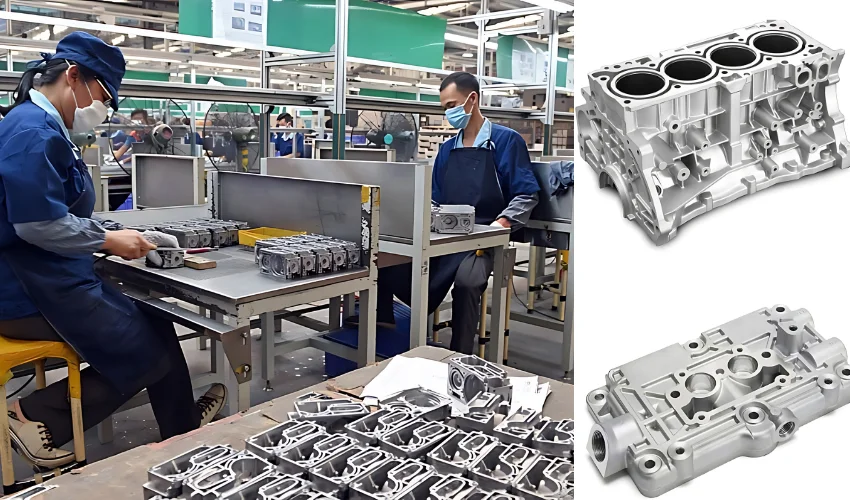
Rapid Traverse
Rapid traverse positioning is also called point interpolation. With this method of positioning, the machine tool will travel as fast as it can to the position it needs to reach. The movement speed is set to the fastest. With this type of positioning device, production is faster. However, it needs to be programmed carefully as it is more prone to errors.
Linear Movement
Linear interpolation is another name for linear movement. With this method of positioning, the machine moves in a straight line along the X and Y axes with no diagonal movement. The system controlling the motion is recalibrated and after each point, the next linear motion is started. Rapid traverse is faster than linear traverse. Nevertheless, the coding of linear positioning is relatively simple.
Circular Motion
When using the circular positioning method, the tool moves in a circular motion around a central axis. Round objects such as cylinders or punches are placed in this way.
Principle of Operation of the Machine Control Unit (MCU)
Inside a CNC machine tool is a small computer called the Machine Control Unit. The Control Loop Unit (CLU) and the Data Processing Unit (DPU) are its two components.
The DPU of the MCU is responsible for moving parts, translating software, and performing mathematical operations. the CLU takes input information and sends it to the MCU for processing.
CNC Coding
Code, also known as a programming language, is the way the operator talks to the CNC machine. In the past, CNC methods did not require programming, the system was controlled by a perforated belt. However, if a “computer” is added to the CNC, it is necessary to know how to program in order to use advanced automation systems.
Today’s software programs are very intelligent. Programming a CNC machine takes a lot of skill and you need to learn the code language. Designers can make models, which a software code generator translates into machine language. The automatically generated code also needs to be debugged in order to avoid errors.
G-code and M-code are two important codes for CNC programs. Let’s learn about them one by one and figure out what they mean.
What Are G-codes?
G-code stands for geometry code. The machine moves according to the instructions of the G-code. All position factors are set by the G-code. This includes the start point, the endpoint, and the path between them.
Although all CNC tools use G-code, the meaning of the code itself varies. In most cases, the difference is in the number of zeros or spaces. In a nutshell, these are some CNC G codes:
- G: Tells the tool how to start and stop work.
- N: Provide the line number
- F: Provides the feed rate
- X, Y, and Z: these are the Cartesian coordinates of the position
- S: Sets the spindle transfer speed
- T: Decides which tool to use
- R: Provides the radius of the circle for the cutting tool.
Each command can have multiple sub-commands. For example, here are some positioning commands:
- G00: Move quickly to the specified position
- G01: Move to a specified position in a straight line
- G02: Creates a clockwise arc of the specified radius
- G03: Creates a counterclockwise arc of the specified radius
The above commands can also be written as G0, G1, G2, and G3 on some computer systems.
What Are M-codes?
M-codes control different tasks of a machine tool that have nothing to do with positioning or how the machine works. In the CNC world, “M code” refers to machine code or “other code.” M code can be used to control coolant flow or to automate tool changes.
As with G codes, the meaning of M codes can change. Some machines will accept the M01 command, but others will need to be written as M1.
The following are some examples of frequently used M codes:
- M00: Stop in the middle of the program run
- M01: Selective stop during program run
- M02: End of program
- M08: Start coolant flow
- M09: Stop coolant flow
What Are the Benefits of Using CNC Machining Processes?
There are many benefits of using CNC machining processes instead of operating machines manually. The following are some of these advantages:
Faster speeds
CNC machines can operate tools faster than a person. In addition, there is no break between operations.
Error compensation
By changing the way they move, CNC machines can anticipate and compensate for errors. Intelligent machines can calculate errors in real-time. This means that materials with thermal or physical defects can still be machined very accurately.
Safety measures
CNC machines have many safety features to ensure the safety of the operator and the workplace. In case of accidents, safety stops are available.
Customization
CNC programming codes can be changed in many ways. With the help of a programmer, the same CNC machine can do many things. When you change the program on a CNC machine, it can cut both solid spheres and solid cylinders.
Self-diagnostics
CNC machining systems can even find and report their own errors. This is called “self-diagnosis.” Self-diagnostic technology lets the operator know immediately when there is a problem. Accidents such as overheating, program problems, workpiece damage, and machine breakdowns can be avoided through diagnostics.
Scalable solutions
CNC machining systems have no size limitations. Whether it’s a small enough thread or an entire airplane frame, it can be machined on a CNC machine. In addition, it is possible to change the machining speed as required.
Quality Control
CNC machining systems have built-in quality control. Sensors can check each piece and discard it if it doesn’t meet the manufacturer’s standards.
Complex shapes
CNC machining systems can make very complex parts with sophisticated tools and machines with multiple axes. It can even make parts with internal structures.
In Summary
CNC machining technology is one of the most amazing technologies of modern times. Due to the power of CNC machines, it is used in a wide range of industries. No matter how complex your job is, you can choose to trust a CNC machining company in China because China Foundry Synergy Group has a wide range of CNC machining solutions to choose from to meet your needs. You can contact us anytime for more information.
